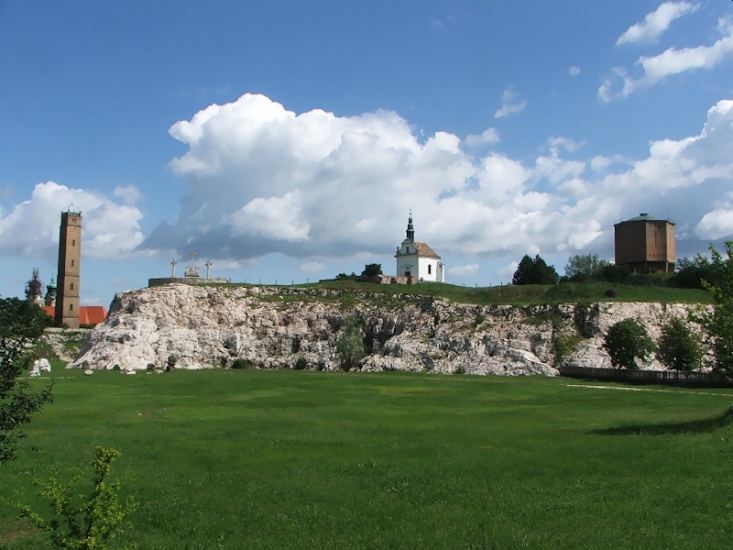The nature reserve is located next to the Kálvária hill in Tata. This abandoned quarry is one of the internationally known and recognized spectacular showcases of geological nature conservation, a veritable open-air museum of the geohistorical Middle Ages.
77/2007 on the maintenance of the protection of the Tata Kálvária-domb nature reserve. (X. 18.) Maintained by KvVM decree. The reason and purpose of the protection is to preserve the geological, topological and paleontological values found in the area.
Basic data
Declaration of protection: 1225/1958 OTvH no. by resolution
Pedigree number: 67/TT/5 8
Extent: 2.7 ha
Affected settlement: Tata
Nature conservation manager: State Institute of Geology
Brief description of the protected natural area
195 million years of history can be observed and studied in the 2.6-hectare area. Since the geological section in the area is one of the most complex and representative sections for the Triassic, Jurassic and Cretaceous periods of the geohistorical Middle Ages, it is therefore registered as one of the basic geological sections of Hungary.
Only the uppermost, about 10-20 m thick section of the mass of the oldest, Triassic layers, several thousand meters thick, can be studied on the surface. This Dachstein limestone is rich in white unicellular organisms and the skeletons of shallow-sea creatures.
Megalodus shells with 10-20 cm thick and strong shells also occur in large numbers.
The 40-meter-thick Jurassic formations introduce the visitor to a series of events spanning 60 million years. A large number of Brachiopods (spinning arms) and spectacularly decorated Ammonites (foot-headed ones) can be observed.
During the study of the flint layer belonging to the Jurassic period, stone quarrying tools of Neolithic man (antler tools, chipped stone tools) and valuable archaeological and paleontological finds were also found in the mine area. Those interested can see the memories of prehistoric flint mining at an exhibition.
The introduction 135 million years ago and approx. The Cretaceous period lasting 70 million years is also represented. At the beginning of the Cretaceous, the area around Tata was a dry land. The former rocky coastline of the Cretan Sea was excavated at the presentation site, where the remains of the tidal fauna can also be studied.
The process of land destruction was followed by sea flooding, the product of which is the so-called "blue stone" (crinoid limestone), the bluish-white rock material mined by the quarry. Tata Castle was also built from this.
